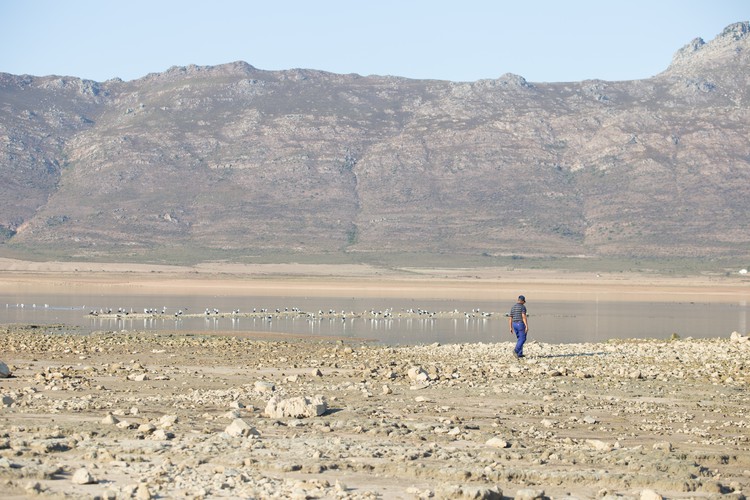Have you started your water committee yet?
Here’s how we’re preparing for Day Zero

Do you have a water committee on your residential block? Is there a structure at your child’s school, planning for how to keep the doors open when water runs out? If you’re employed, do you have one in the building where you work?
If the answer’s no, that needs to change.
As the water crisis deepens in Cape Town, and the threat of Day Zero - a total shut-off of water across most parts of the City - becomes an increasingly likely reality, there needs to be a water committee in every single building and every single street.
A recent advisory by WWF SA on planning for Day Zero prompts the question:
“Will my office still be open?”
“…Start talking to your boss and your colleagues now: How are your premises prepared for Day Zero, and how can you work remotely, via the cloud, if not? How many people will need to stay at home because their children’s schools are closed?”
I work at Community House, a hub of unions and community organisations for many proud decades. But it was this month that we realised we didn’t have answers to these questions: we didn’t have a plan to keep Community House running without water.
A few tenants of Community House started talking about this. We realised we needed to act together, to prepare for the worst. So we started a water committee.
The committee would have two objectives: the first is to do everything in our power to reduce our collective water use now. While most people as individuals had been “doing their bit”, making a collective and coordinated response to water conservation was a long overdue step. The second objective was to plan for the likelihood of the taps running dry in less than three months: this meant setting up a toilet system that didn’t require piped water, ensuring drinking water, and taking long overdue steps to capture any rainwater that may fall on our building’s roof. (Day Zero was scheduled 12 weeks from the moment of our forming a committee; it has now been brought forward to ten weeks.)
This initiative is still in its early stages. But a few things have already become clear, which may help shape others’ efforts.
- There are steps you can take right now. Talk in the corridor with a few neighbours and colleagues until there’s enough of a critical mass that you can form an interim committee. Rope in the building manager and as many tenants as you can.
- For it to be effective, a water committee needs to be as diverse and inclusive as possible. For example, there needs to be a strong representation of women, so that sanitation proposals are gender conscious. There needs to be strong representation of any cleaning staff, who are often the frontline of any water-saving efforts. All water-saving and Day Zero planning needs to be conscious of the needs of disabled people, the elderly, and other people with special needs: the more inclusive the structure is, the more inclusive its planning will be.
- You’ll need some basic information on the building’s water usage and what it currently pays for water. As we move to Level 6b water restrictions, there is a good chance that buildings which haven’t cut their water usage are going to get massive bills which will chow funds that will be desperately needed to pay for alternative water measures in the event of Day Zero.
- There are a few basic things you can do right now: send out an email to all tenants to let them know about the initiative and to lay down some non-controversial steps to get people saving water. Implement the let-yellow-mellow policy if this hasn’t already happened, and put up water-saving posters for any bathrooms. (You can download template posters here.)
- The committee must then come up with a series of water-saving measures. For example, shutting off non-essential bathrooms, developing grey-water provisions for any toilets, reducing water pressure, estimating costs for alternative sanitation for the Day Zero scenario, getting costs for rainwater tanks. Once there’s a draft plan, call a general meeting of residents to brief people on these proposals and get them approved or amended.
- We realised that everyone immediately saw the importance of the initiative, but all of us had been waiting for someone else to make a plan. Perhaps the most important lesson from this initiative is that you can start this work in your community, right now, and if you don’t, it may not happen.
Many residents of informal settlements and townships have years of experience of a Day Zero scenario: community structures for provision of basic services are an important form of organising in such areas. It is beyond urgent that residents of affluent and well-serviced areas follow suit. In high-use, suburban areas, the biggest priority has to be cutting water usage as a whole.
We have scary months ahead. The water crisis is an environmental, economic, political and humanitarian disaster: it threatens to bring all the worst inequalities and injustices of our society to the fore. But it can also bring out the best in us: resilience, compassion and solidarity. How we act in these coming weeks and months will determine which.
Support independent journalism
Donate using Payfast

Don't miss out on the latest news
We respect your privacy, and promise we won't spam you.
Next: Drought: City answers your questions
Previous: Parents blame unqualified teacher for poor results
© 2018 GroundUp. 
This article is licensed under a Creative Commons Attribution-NoDerivatives 4.0 International License.
You may republish this article, so long as you credit the authors and GroundUp, and do not change the text. Please include a link back to the original article.
